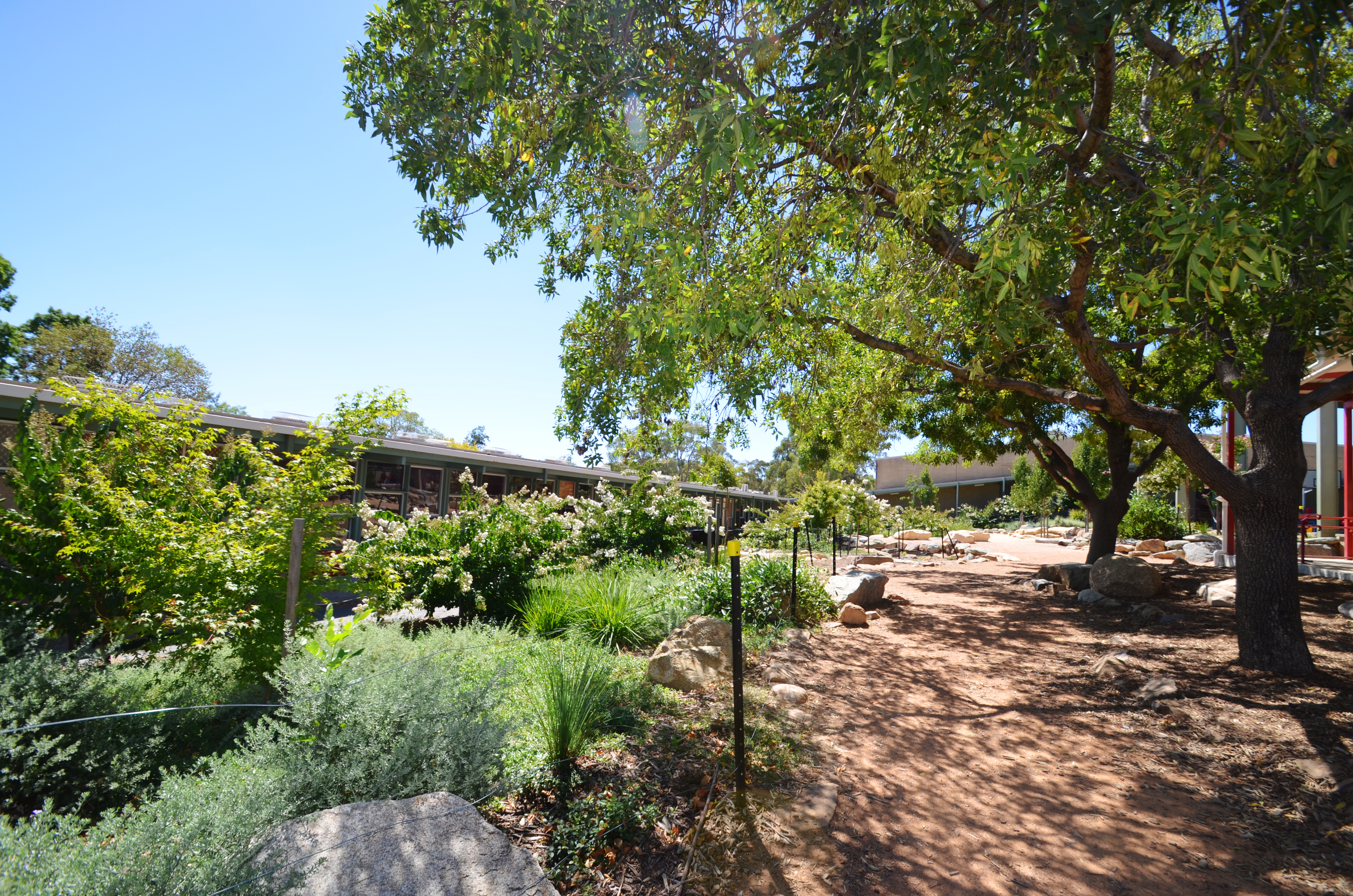2016 OCTOBER
PBDG’s Aranda Primary School Adventure Garden was featured in Architecture and Design’s article, 3 case studies that utilise stormwater as a valuable resource.
Extract
Once an unusable dustbowl, Paul Barnett Design Group (PBDG) converted the heart of Aranda Primary School into an adventure garden.
“The water harvested adventure play space has transformed the centre of the school to become an oasis where before no children played as it was too hot,” Paul Barnett, Director of PBDG says.
“They now fill the area with activities ranging from sitting, jumping over rocks and inhabiting the array of social and play space.”
When Barnett first visited by the site, he was taken by the children playing “steam trains” by shuffling their feet in the dust. The playground consisted of hard, compacted clay which had no chance of sustaining any plants.
The team started by looking at the contours, the sun and wind microclimate and the potential for catchment for adjacent roofs and ground surfaces. They created spatial design that included pathways, sandpits, mud spaces, rock terracing and climbing places, tree logs, and meeting spaces.




A water harvesting system was then developed by Paul Totterdell to create an underground trench system that mirrors the surface designs.
The trench and catchment system holds water and allows the water to permeate through the soil, creating plumes of moisture about one metre either side of the water harvesting trenches and enabling roots for trees and plants over time to enter the trenches. The dry creek beds were then created with rocks, sleepers and soil and sand and gravel and geotextiles. Topsoil was reused, improved, mulched and placed ready for planting. The five-stage Masterplan covered the playground, sloped areas and ovals. Each area utilises roof water catchment, and existing ground levels were re-sloped to create water holding instead of run-off.
Funding limited the amount of planting so PBDG is now revising the area under the next stage to finish the planting and consolidate the system to ensure that ground covers are connecting and providing a shading of the soil. In about five years’ time, the new adventure play area will create a forest of shade. As plants establish themselves and their roots seek out and enter the water harvesting trenches, there will be no maintenance other than weeding and fine-tuning plant cover over the first few years. As the trees mature, the space will require lower amounts of water and will provide a shady summer play space and summer sheltered winter space.





